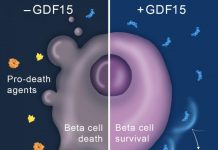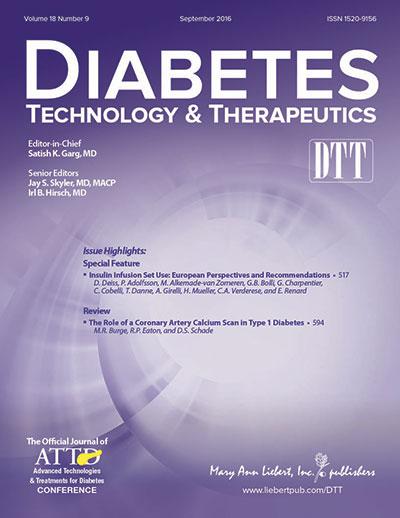May 2006 � A University of Houston professor and his student have made a major discovery in the field of diabetes research and diagnosis, finding a new mechanism for the formation of insulin crystals in the pancreas.
Peter Vekilov, associate professor of chemical engineering, and Dimitra Georgiou, a recent doctoral graduate in chemical engineering, both in UH's Cullen College of Engineering, are behind this breakthrough. Since insufficient insulin production in the pancreas is one of the manifestations of adult-onset diabetes, Vekilov and Georgiou are studying the process of how insulin is produced in the first place. Understanding how the body creates this hormone will make it easier for researchers to discover why some individuals do not produce enough insulin and thus develop diabetes, Vekilov said. Specifically, the two have focused on the creation of insulin crystals, the form in which insulin is stored in the pancreas before it is released in the bloodstream.
"It is possible that the insulin deficiency happens when the crystals don't form properly and then part of the insulin that is produced gets destroyed," Vekilov said.
Proinsulin, a molecular precursor to insulin itself, is the reason for these crystals. After an insulin molecule is produced from proinsulin, it attaches to an insulin crystal only in special locations where other insulin molecules have formed right angles, called kinks. Using atomic-force microscopy, they discovered a new mechanism by which insulin molecules attach themselves to crystals to form these kinks. They found that groups of insulin blocks create large protrusions, dubbed "mounds" by Vekilov and Georgiou. The very nature of these mounds results in the creation of multiple kinks � far more, in fact, than other methods of kink formation.
By providing so many spaces where insulin molecules can attach to an insulin crystal, these mounds allow for the rapid growth of that crystal and only form when there is a surplus of insulin that allows for rapid crystal growth. Since no mounds appear when there is a lack of insulin and insulin crystals both grow and dissolve at kinks, mounds are important sources of a crystal's net growth.
Continue Reading Below ↓↓↓
"Typically in nature, fast growth also results in fast dissolution," Vekilov said. "But this process cheats physics because when there isn't a lot of insulin, mounds don't form. It's an asymmetric mechanism that has no balance."
While this discovery will play a significant role in gaining a better understanding of diabetes, it also is an historic find in the area of crystal formation and use, as only the third mechanism of crystal formation ever discovered. Before this finding, there were only two known ways that crystals grew � the first was proposed in 1876 and the second in 1968. Though the first and second discoveries, proposed by prominent American scientist and founder of modern thermodynamics J.W. Gibbs and by Russian scientist V.V. Voronkov, respectively, only recently demonstrated their applicability to real systems, this latest mechanism has already been experimentally proven in the work by Vekilov and Georgiou.
"It is possible that crystals composed of materials other than insulin also grow in this manner," Vekilov said. "If so, this discovery could significantly impact any number of fields that deal with crystals. It can help us understand all processes of crystal formation, including semiconductor and optical materials, geological crystallization, ice formation and the physiological and pathological crystallization of proteins and small molecules."
Source: University of Houston










